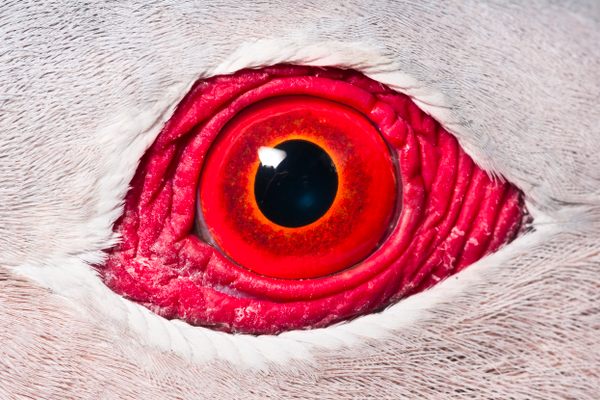Found: 7 Ancient Footprints of a Giant, Flightless Bird
They could be up to 12 million years old.

Michael Johnston had just taken his boss’s dogs for a swim in the Kyeburn River in Otago, New Zealand, when he noticed something unusually prehistoric: Enormous, three-toed footprints almost a foot wide speckled the riverbed. Though Johnston didn’t know it at the time, he had just discovered footprints from a moa, a gigantic flightless bird that roamed New Zealand until their extinction in the 1300s. And these aren’t just any ordinary moa tracks. Researchers believe the prints are the first ever found on New Zealand’s South Island and could be up to 12 million years old, according to ABC News.
When Johnston spotted five footprints in the clay bank in March 2019, he reached out to the local Otago Museum, according to TVNZ.com. Kane Fleury, a natural science assistant curator at the museum, was stunned to see Johnston’s pictures, which clearly revealed the perfectly preserved footprints. A few days later, Fleury drove down to meet Johnston at the river, threw on a snorkel and wetsuit, and dove down to see the prints for himself. Once underwater, Fleury discovered two more prints hidden under gravel, for a total of seven astonishingly well-preserved tracks.

After seeking permission from local iwi—one of the tribes within the indigenous Māori community—the museum experts began the excavation, according to a press release from the Otago Museum. Fleury believes that a major flood from November 2018 caused the bank to erode, thus revealing the footprints. Because the prints were submerged under a meter of water, the experts had to temporarily divert the river’s flow in order to chisel out the prints one by one from the clay. Ian Griffin, the director of the Otago Museum, captured a time-lapse of the excavation, which you can watch here.
After all the footprints are extracted and transported to the museum, researchers will begin the long process of drying each hunk of clay to ensure the substrate remains stable enough to prevent any damage to the prints. After this conservation treatment, the prints will go on display.
Moas resembled enormous, fluffy emus, standing over 12 feet tall and weighing over 500 pounds, until they were hunted to extinction. So their footprints, like those of any extinct animal, are quite rare. Until now, scientists had only preserved 25 footprints from the giant bird, according to the museum’s statement. Most moa bones known to science are around 12,000 years old, so these newly discovered tracks are exceptional for their age. “It makes you wonder how many other moa prints are buried or destroyed, or no one knows they’re there,” Mike Dickison, the world’s foremost moa expert, told The New Zealand Herald.
Meanwhile, Johnston continues his work driving tractors in the nearby town of Ranfurly. But as he told The Herald, he plans to “walk around the hills with wide open eyes” in case any other fossils choose to reveal themselves to him or his dogs.

















Follow us on Twitter to get the latest on the world's hidden wonders.
Like us on Facebook to get the latest on the world's hidden wonders.
Follow us on Twitter Like us on Facebook